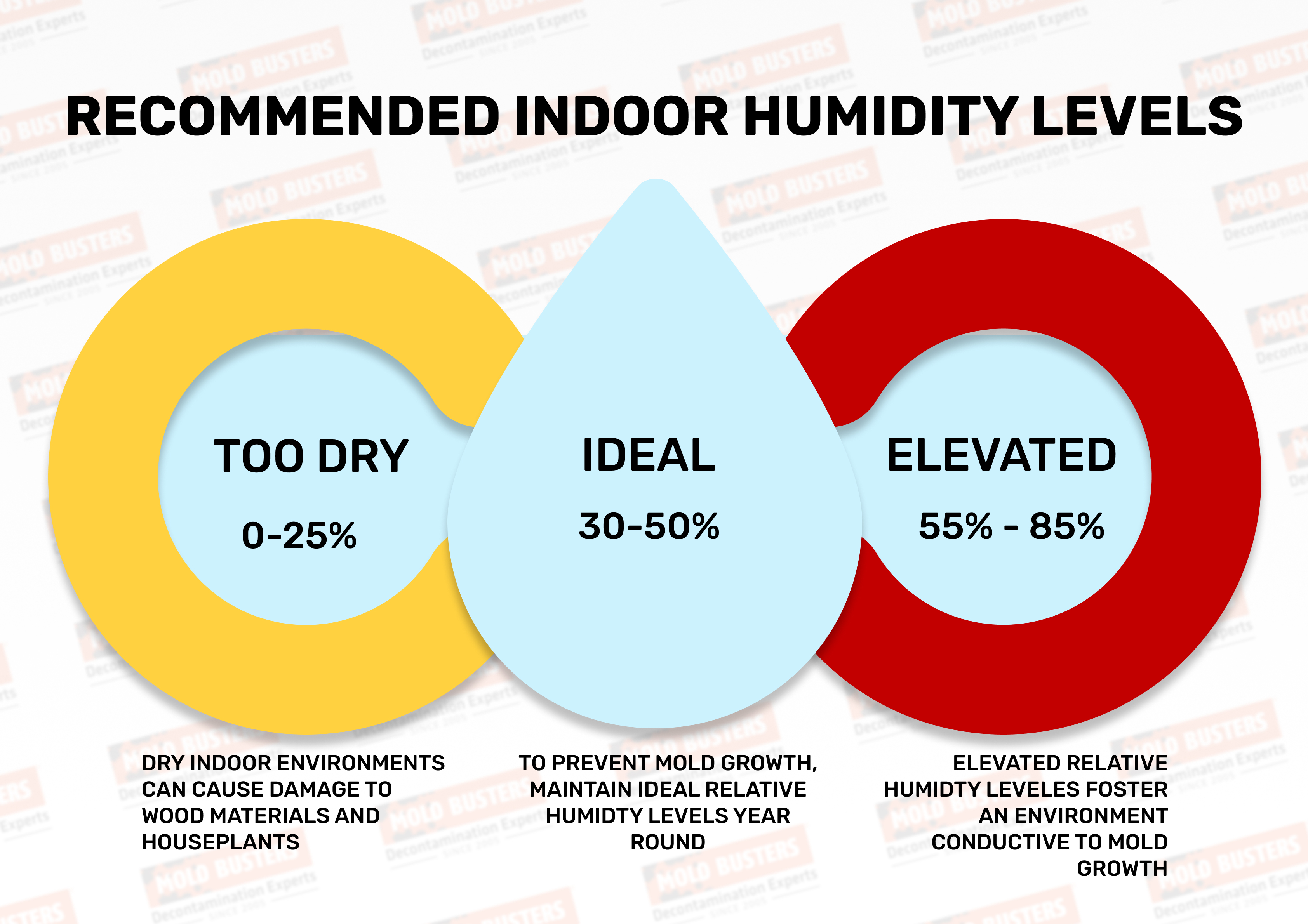
INDOOR ENVIRONMENTAL ASSESSMENT





The results and interpretation of our inspection and sampling procedures are based on conditions present at the time of the assessment. All efforts were made to ensure accuracy in the collection, and observation of relevant data within the inspected area(s). Unless otherwise stated, the assessment is non-invasive in nature, and inaccessible areas (i.e., behind wall cavities, under sub-floor materials, etc.) may contain concerns not presented in this report due to the restrictions and limitations of the assessment provided. The information and recommendations presented in this report are based on data available at the time of the inspection. Any recommendations made in this report are made, in good conscience and in accordance with the following guidelines:
- Residential Mold Removal Guidelines, 1st Edition, Mold Busters, 2019;
- S520 Standard and Reference Guide for Professional Mold Remediation, IICRC, 2015;
- Mould Guidelines for the Canadian Construction Industry, Canadian Construction Association, 2004;
- ANSI/ASHRAE 62.2-2010, Ventilation for Acceptable Indoor Air Quality in Low-Rise Residential Buildings, American Society of Heating, Refrigeration, and Air-Conditioning Engineers, 2010
Health Canada considers indoor mould growth to be a significant health hazard. The level of concern depends on the extent of mould, how long it has been present and the sensitivity and overall health of the residents. Some people are more susceptible than others. Health Canada recommends controlling dampness indoors and cleaning up any mould regardless of the type of mould present.
COMPANY PROFILE
Mold Busters: Decontamination Experts
Mold Busters is a Canadian-owned and operated mold inspection, testing, and removal company that has been established since 2005.
Based in Ottawa, Mold Busters have been servicing residential, commercial, and government clients, promptly dealing with their indoor environmental concerns with professionalism and precision. Their dedication to providing excellent service to their customers have allowed them to grow, opening locations across Ontario, Quebec and the Asia-Pacific.
- Visual & diagnostic mold assessments
- Mold testing
- Comprehensive reports
- Mold removal
- Remediation
- Disinfection
- Non-viable, and viable air quality testing
- Odor removal
- Asbestos testing
- Ventilation
- Duct cleaning
- Air exchanger installation
- Thermal imaging inspections
Mold Busters does not sub-contract any inspection or remediation work, unless otherwise stated. All Mold Busters inspectors are trained through the National Association of Mold Professionals, InterNACHI, IAQA, or the IICRC.











Please visit our website for more information: www.bustmold.com
EQUIPMENT
Mold Busters utilizes a variety of diagnostic and sampling equipment during the assessment. The type of equipment used for each assessment is determined by the technician conducting the inspection. All equipment is regularly calibrated to ensure accuracy in the results. Common diagnostic equipment utilized includes:
1. Precision Hygro-Thermometer - Extech RH490
This measures relative humidity, temperature, and dew point levels. As per ASHRAE guidelines, relative humidity levels above 65% are indicative of a potential for mold propagation.
2. Pinless Moisture Meter – Extech MO257
This non-invasive moisture meter measures the moisture content of a building material. Typically, the MC (moisture content) of wood & drywall should be below 16%.
3. FLIR One Pro
This is a thermal imaging camera attachment that assists in determining heat differentials, or thermal anomalies within building materials.
4. Particle Scan Pro - IQAir
This is an airborne laser particle counter which gives an instantaneous reading of solid particulates between
0.3µm and 5.0µm with a refresh rate of 0.025CFM.
5. Instant Swab Analysis
This is an instant swab analysis utilized to confirm or deny the presence of biological contaminants, such as bacteria, fungi (mold), etc., on a discolored surface area. This is a non-speciating diagnostic swab test.
6. Buck BioAire – Bioaerosol Sampling Pump B520 used with Air-O-Cell cassettes
This is a compact 5-20 LPM controlled flow sampling pump for bioaerosol sampling, which accommodates Air- O-Cell cassettes. This is utilized for air quality testing. All sampled cassettes are sent to an independent, government accredited laboratory that specializes in microbial analysis.
All technicians are equipped with the necessary PPE (Personal Protective Equipment), lighting, and accessibility tools required to perform most indoor assessments. Additional equipment or specialized diagnostics may be utilized on requested projects, as needed. The technician reserves the right to use any or none of the equipment listed or unlisted during the assessment process.
Although there have been many changes in the world due to COVID-19, our commitment to providing safe and effective services holds strong. As such, our highly trained and experienced staff are taking additional precautions to keep you safe during in-person appointments and remediation projects.
VISUAL & DIAGNOSTIC RESULTS
Objectives
Mold Busters conducted a visual and diagnostic inspection at 341 Pennington Street, Moores Mills, BC, on August 18, 2022.
The objectives of the assessment were to:
- 1. Visually and/or diagnostically inspect areas of the property to identify any potential indoor environmental concerns;
- 2. Determine the source(s) and extent of these concerns, if present;
- 3. Establish an appropriate action plan and/or provide recommendations for improvement, if necessary.
Diagnostic Results
The technician made the following diagnostic observations during his inspection of the property 341 Pennington Street, Moores Mills, BC, ON:
 LOCATION: Basement Area
LOCATION: Basement Area
- Temperature: 19°C
- Relative Humidity: 65%
- Dew point: 18.3
- Moisture Meter: Visible moisture was observed along the floor of the basement area and from the foundation wall materials.

 GENERAL OBSERVATIONS:
GENERAL OBSERVATIONS:
• Visible mold growth was observed on the walls and floors around the water tank and along the exterior walls in the Basement Area.
• Wood materials (plywood platform, framing, etc.) were found to be compromised by moisture, near the water tank area.
• A water valve near water tank area was found to be dripping at the time of the inspection, contributing to the moisture content along the floor.
• The floor in the basement area is exposed earth/stone; with no impermeable membrane. Water vapor emanating from the floor is contributing to the pervasive 'musty' odor observed at the time of the inspection.
• It was observed that the basement area is partially insulated with polyeurethane sprayfoam along the upper portions of the exterior walls. The lower portions are not insulated. This may create a thermal imbalance during the colder months, which can facilitate condensation and thus, conditions conducive to fungal growth.
• The foundation walls were found to display evidence of moisture intrusions, by means of water staining and efflorescence. The age of the home and the materials used for the foundation wall materials may required a professional foundation specialist to assess the current state of the foundation wall materials.
• A moisture source contributing to the visible moisture issues in the basement along the foundation walls and flooring is related to inadequate moisture diversion strategies implemented along the exterior of the home.
• At the time of the inspection, it was observed that the downspouts may not be extending far enough from the foundation walls and that the grading may be negatively sloped towards the home. A metal roof design was also observed, without any ice guards, which can damage the eavestroughs during the winter months, and impede its ability to adequately divert moisture away from the home. These are all contributing factors to the moisture concerns observed within the basement area.
• It was observed that firewood and logs are being kept and possibly cut in the basement area. It is generally recommended to do so outside of the property so as to prevent the introduction of mold spores, termites or other sources of building contaminants that may be present in firewood, logs or other related materials.
• Relative humidity measured at the time of the inspection was elevated above the ideal range (30-50%) for an indoor environment. Elevated humidity levels (above 55%) provide the ideal conditions for moisture and condensation to accumulate indoors. Excess moisture in the indoor environment and on building materials promotes microbial, bacterial, and fungal development. These contaminants not only negatively affect indoor air quality but also cause damage to building materials and belongings inside the property.
 LOCATION: Main Level Area
LOCATION: Main Level Area
- Temperature: 22°C
- Relative Humidity: 56%
- Dew point: 12.6
- Moisture Meter: Active moisture was detected along the flooring in the bathroom area, near the toilet
 GENERAL OBSERVATIONS:
GENERAL OBSERVATIONS:
• At the time of the inspection, active moisture was detected along the flooring in the bathroom, near the toilet. This may be the result of a leaky seal, or compromised wax gasket.
• It is recommended to contact a plumber to assess and address any potential leak sources.
• Once the leak has been addressed, it is recommended to remove and/or treat the affected subflooring materials in the bathroom area.
 LOCATION: Upper Level Area
LOCATION: Upper Level Area
- Temperature: 22°C
- Relative Humidity: 55%
- Dew point: 12.2
 GENERAL OBSERVATIONS:
GENERAL OBSERVATIONS:
• At the time of the inspection, active moisture was detected along carpet found in the bedroom area.
• Evidence suggests that the source of the moisture found on the carpet may be from the window area.
• Moisture readings along the wall under the window area in the bedroom of concern did not yield any active moisture levels.
• Carpet is a highly retentive material that can trap particulates & allergens (pollen, spores, dust, etc.) and may increase reactions in individuals with predisposed sensitivities or medical conditions.
• It is recommended to remove the carpet in the affected bedroom area in order to better ascertain and address the moisture source; while removing the carpet as a potential source for contaminants.
• It is recommended to replace all carpets, especially if older than 10 years, with a non-porous alternative, such as laminate or hardwood.
 Testing Performed:
Testing Performed:
• An indoor air quality assessment was performed during the inspection. One sample was collected in the basement area, the second sample was collected in the main level area and the third sample was collected in the upper-level area. A baseline sample for comparison was collected outdoors. All samples were sent to a third-party laboratory for microbial analysis
• The results reveal the presence of Penicillium/Aspergillus group spores in levels exceeding that of the baseline sample collected outdoors in all three indoor air samples
• The laboratory also revealed the presence of Chaetomium spores in the Basement and Upper-Level Area, which is known to be producing mycotoxins and hence is considered toxigenic
• In comparison to the baseline sample, the presence of Penicillium/Aspergillus & Chaetomium group spores were found to be elevated. Additionally, visual observations made during the assessment, along with the confirmed presence of active moisture issues, are sufficient to confirm an abnormal indoor air quality that requires remediation.
Summary:
Elevated Mold Level(s) Found In Indoor Air?
YES
Sample 1. — Basement
Medium: Air-O-Cell - 15.00 l/min. for 5.00 min.
Spores Found:
- Pen/Asp group — 38400 Spores/cu. m
- Basidiospores — 1653 Spores/cu. m
- Cladosporium — 1653 Spores/cu. m
- Hyphal Fragment — 213 Spores/cu. m
- Chaetomium — 53 Spores/cu. m
Sample 2. — Main Level
Medium: Air-O-Cell - 15.00 l/min. for 5.00 min.
Spores Found:
- Cladosporium — 1333 Spores/cu. m
- Basidiospores — 1067 Spores/cu. m
- Pen/Asp group — 267 Spores/cu. m
- Ascospores — 107 Spores/cu. m
- Hyphal Fragment — 53 Spores/cu. m
Sample 3. — Upper Level
Medium: Air-O-Cell - 15.00 l/min. for 5.00 min.
Spores Found:
- Basidiospores — 960 Spores/cu. m
- Cladosporium — 960 Spores/cu. m
- Pen/Asp group — 320 Spores/cu. m
- Ascospores — 213 Spores/cu. m
- Hyphal Fragment — 160 Spores/cu. m
- Chaetomium — 53 Spores/cu. m
Sample 4. — Outside / Baseline
Medium: Air-O-Cell - 15.00 l/min. for 5.00 min.
Spores Found:
- Basidiospores — 23040 Spores/cu. m
- Cladosporium — 17920 Spores/cu. m
- Ascospores — 693 Spores/cu. m
- Alternaria — 213 Spores/cu. m
- Arthrinium — 160 Spores/cu. m
- Pen/Asp group — 160 Spores/cu. m
- Smuts/Periconia/Myxomycetes — 107 Spores/cu. m
- Ganoderma — 107 Spores/cu. m
- Cercospora group — 107 Spores/cu. m
- Pithomyces — 53 Spores/cu. m
- Hyphal Fragment — 53 Spores/cu. m
- Pollen — 53 Spores/cu. m
Penicillium/Aspergillus
The spores of the genera Penicillium, Aspergillus, Gliocladium, and Trichoderma are quite similar when viewed under a microscope and are grouped together under the heading Pen/Asp. Penicillium species are among the most common fungi found in indoor environments, particularly basements. Certain species may cause infections of the eye, external ear, respiratory system, and urinary tract. Some species of Aspergillus are parasitic on insects, plants, and animals including humans. All Aspergillus species are allergenic. Various species can cause extrinsic asthma, pulmonary emphysema, opportunistic infections of the ears and eyes, and severe pulmonary infections. Many species of Penicillium and Aspergillus produce mycotoxins which may be associated with diseases in humans and animals. Several toxins are considered potential human carcinogens. The genus Gliocladium has not been reported to cause disease in man or animals. The genus Trichoderma has been reported to cause infections in immunocompromised individuals, patients undergoing dialysis, and individuals with chronic kidney failure or chronic lung disease.
Chaetomium
A type of ascospore commonly isolated from soil. It is found on a variety of substrates including decomposing plant material and wood, dung, straw, and damp or water-damaged cellulose (e.g. paper on drywall). As a moisture-indicator fungi, Chaetomium only grows when the substrate has a current or previous severe moisture problem. It has been known to cause systemic, cerebral, cutaneous, subcutaneous, and pulmonary infections, though usually only in the immunocompromised.
PHOTOGRAPHIC EVIDENCE
Photographs taken by the technician during the assessment
Location: 341 Pennington Street, Moores Mills, BC
Date: August 18, 2022









CONCLUSIONS & RECOMMENDATIONS
The following recommendations are based on the technician’s visual and diagnostic observations at the time of the inspection within the property at 341 Pennington Street, Moores Mills, BC.
• Professional mold remediation is recommended to be performed in the affected areas (basement area, main level bathroom and upper-level area) in accordance with Residential Mold Removal Guidelines.
• This includes the removal of any non-structural building material that is contaminated with mold, active moisture, or rot. All residual surface areas will be thoroughly disinfected using HEPA vacuums and anti-fungal treatments.
• This work should be performed by trained indoor environmental professionals and be verified upon completion to ensure clearance criteria have been met before any reconstruction begins.
• It is recommended to have the foundation assessed and/or addressed by a professional in that field.
• It is recommended to improve the overall moisture diversion strategies along the exterior which includes extending downspouts away from the property, correcting the grading, ensuring eavestroughs are fully functional and to consider the installation of ice guards along the metal roof.
• It is recommended to ensure there is a polyethyelene membrane installed along the basement floor.
• It is recommended to insulate the remaining portion of the exterior walls in the basement area in order to achieve a more balanced thermal resistance.
• It is recommended to improve the overall ventilation in the basement area by means of a mechanical system. A brochure for the EZ Breathe Ventilation System will be included as an option to consider for your basement type.
• It is recommended to avoid bringing in and chopping firewood in the interior of the home.
Please note that every individual will react differently to mold. The severity of the reaction will depend on factors such as the individual’s immune system, exposure threshold, type of mold species present in the space, and the duration of exposure. Health Canada considers indoor mold growth to be a “significant health hazard" and recommends that all mold, regardless of the species, be cleaned and that the underlying water or humidity problem be dealt with quickly to prevent potential health issues. (Source: Addressing moisture and mould in your home; Canada.ca)
If you have any questions regarding this report and the findings therein, please contact Mold Busters at 1-877-566-6653.
As a local business, we really value our client's feedback. This helps us to improve as a team, and gives other, new clients the opportunity to see the value in hiring our company.
We kindly ask you to write an honest review of our services by visiting the link below:
https://forms.gle/zZg9YU4Mu2tdwVr66

Andrey Golubev, CMI, CMR
Co-Founder | Indoor Environmental Inspector














